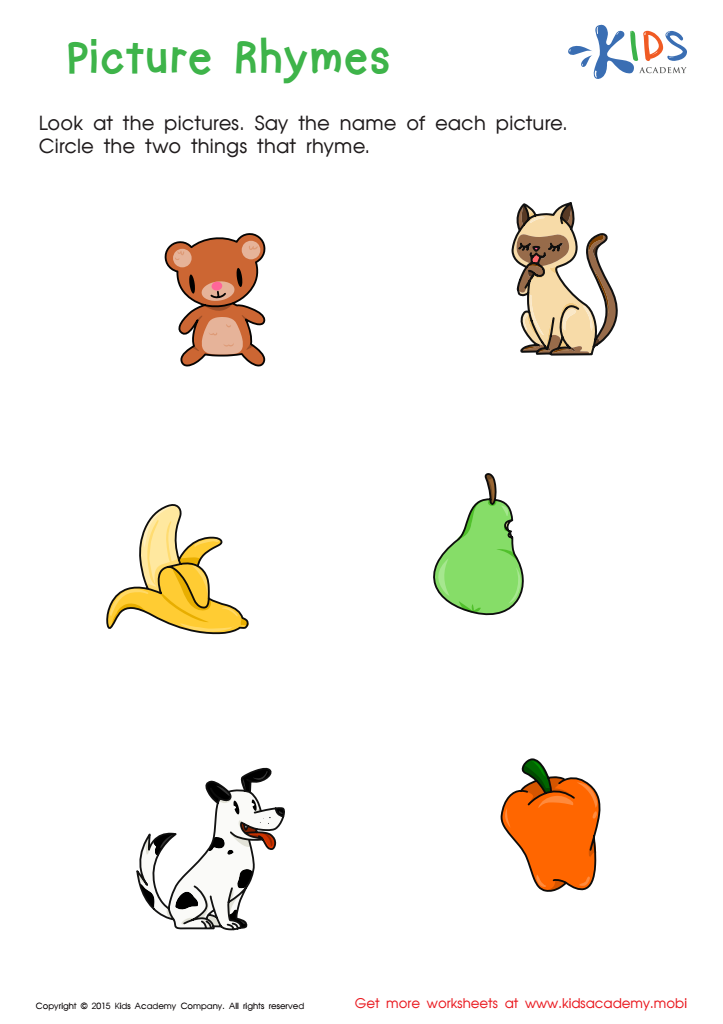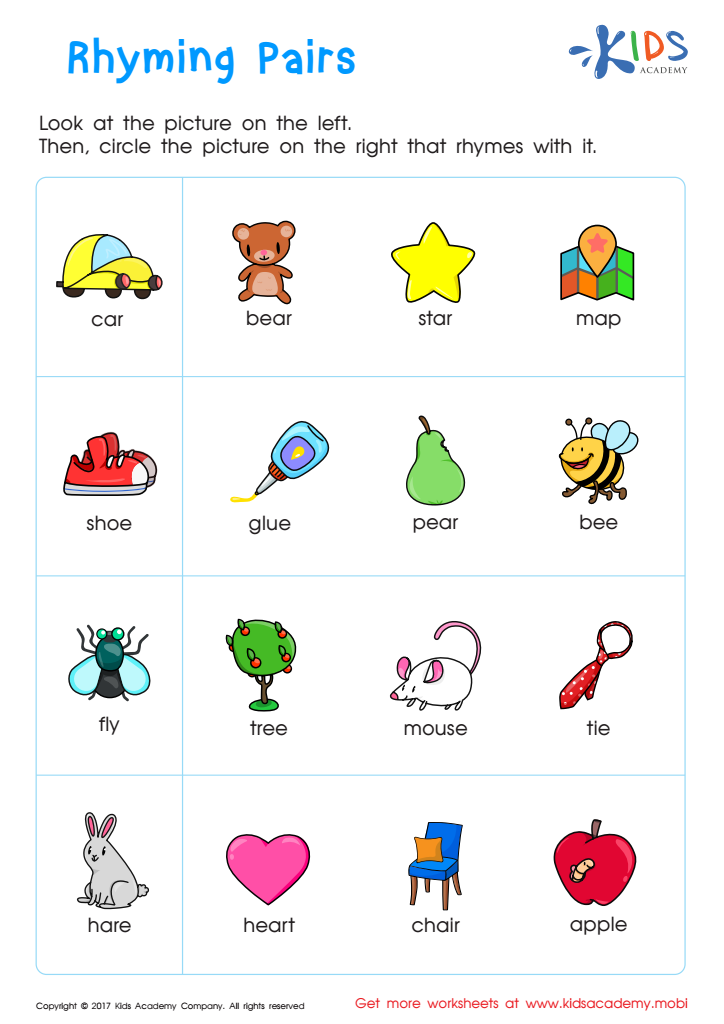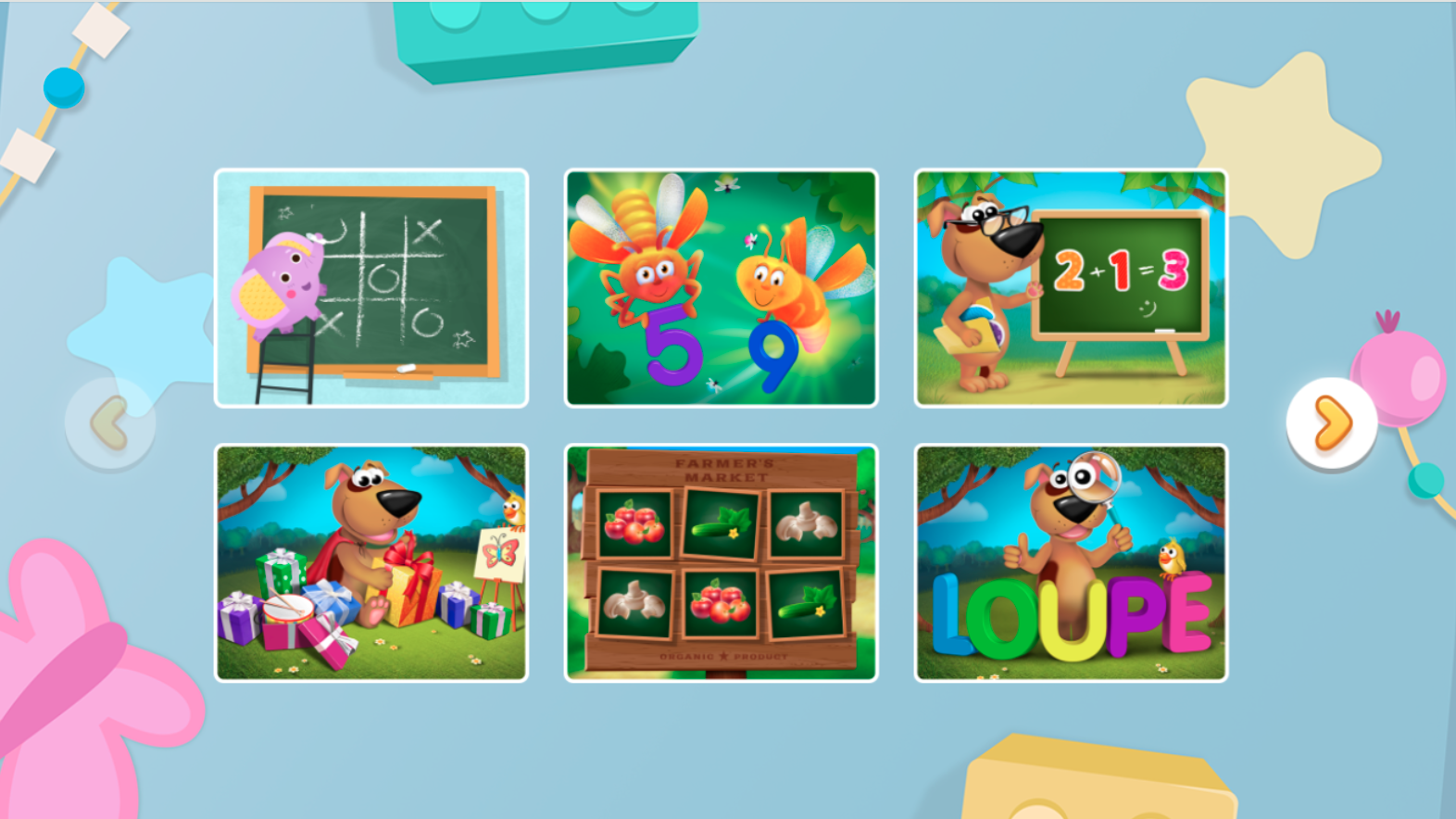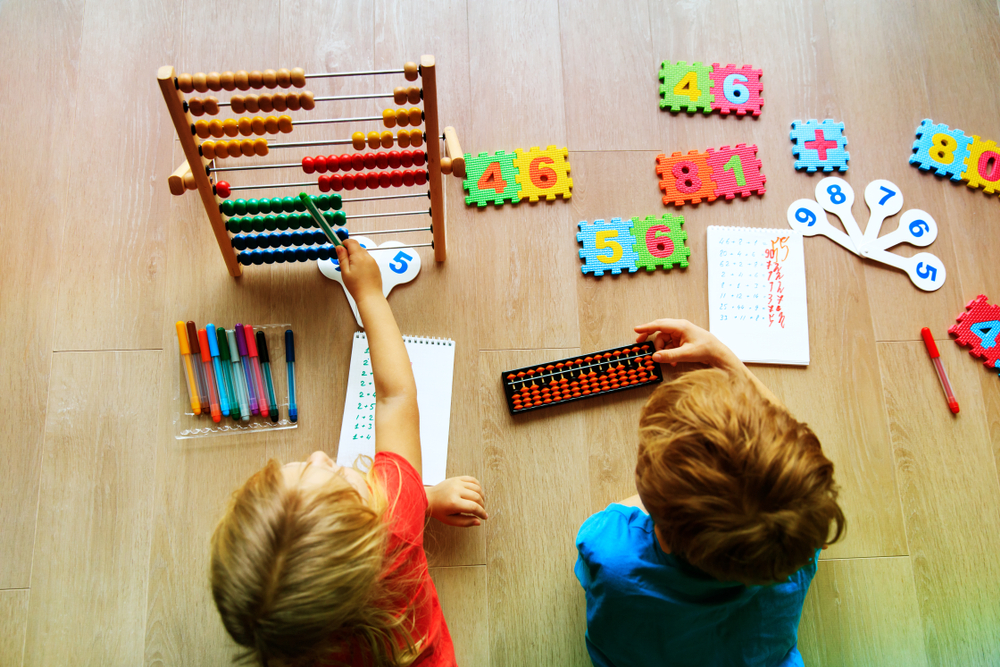Rhyming skills development Normal Rhyming Words Worksheets for 7-Year-Olds
3 filtered results
-
From - To
Enhance your 7-year-old's reading journey with our Normal Rhyming Words Worksheets. Designed to develop essential rhyming skills, these engaging activities help children recognize and generate rhyming words, fostering phonemic awareness and spelling proficiency. By practicing with these fun and educational worksheets, young learners can improve their listening skills, vocabulary, and overall reading fluency. Perfect for at-home practice or classroom use, our worksheets provide a solid foundation for literacy development. Give your child the tools they need to succeed with our expertly crafted rhyming exercises tailored specifically for 7-year-olds.


Rhyming Words Rhyming Worksheet


First Words: Picture Rhymes Worksheet
Rhyming skills are a foundational aspect of literacy that parents and teachers should prioritize for 7-year-olds. These skills are crucial for several reasons. First, rhyming aids in phonological awareness, which is the ability to recognize and work with sounds in spoken language. This awareness is fundamental for learning to read, as it helps children understand how sounds form words and sentences.
Second, engaging in rhyming activities helps expand a child's vocabulary. When children identify words that rhyme, they naturally become exposed to new words, their meanings, and contexts, enhancing their language comprehension. For example, recognizing that "cat" rhymes with "hat" introduces multiple vocabulary words at once.
Third, rhyming fosters memory and recall. The predictable patterns in rhymes make it easier for children to remember words and their spellings. This repetition and recall process is beneficial in learning and retaining new concepts.
Fourth, rhyming is often fun and can be a source of joy in learning. Rhyming games, songs, and books can keep children engaged and motivate them to practice reading. It transforms learning into an interactive and enjoyable experience.
In sum, rhyming does much more than just help children play with language—it lays down critical cognitive groundwork necessary for reading and language proficiency, affects academic success positively, and fosters a lifelong love for learning.
 Assign to My Students
Assign to My Students

















